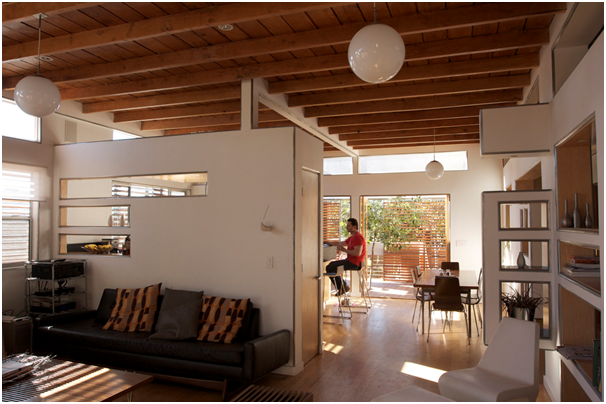
Growing old is inevitable, and with more of us living much longer into retirement age, there are implications for all of society.

Many of us are living longer in our own homes and will not need sheltered accommodation for a longer time. Some of us will face challenges, however, and that’s when a granny annexe might be a viable option. If there are mobility issues, specialist accommodation is required.
Architects are finding that there is a significant and growing market for designing clever interiors for over-65s. Retired residents are bringing a fresh new set of challenges for designers. Accessibility and mobility are of the utmost importance. For example, a shower needs to be big enough to accommodate a wheelchair.
Thoughtful Design
Careful planning does not need to signify the end of stylish design; some clear consideration of customers’ needs makes all the difference. As mobility is one of the biggest challenges facing the elderly, widening doorways and corridors is an obvious start. Designs that are all on one level with no stairs, no doorsteps, and lower sinks can make it easier for people to continue with their lives as long as possible. Sometimes, it is easier to accommodate a clever design for an elderly relative in your own home rather than in theirs, and if that’s the case, specialists like http://www.annexespaces.co.uk/ can help.
More Than Space
Poor lighting can pose a real threat to those who might already be unsteady on their feet, so designs that incorporate lots of light and eliminate shadows can minimise the risk of accidents. Add to that the increased likelihood of vision problems in older people, and lighting becomes even more important.
Light sources should be shielded to protect glare, and high contrasts should be eliminated if possible. Designers can help by incorporating large windows into spaces, especially along hallways and stairs if there are any.
For more suggestions on factors to consider when designing interiors for elderly customers, see Housing LIN.
If you are involved in the design of a home or annexe space for yourself or a loved one, think about what is required now and what is likely to be required in the future; if mobility is starting to be an issue now, it is not likely to get any better.
